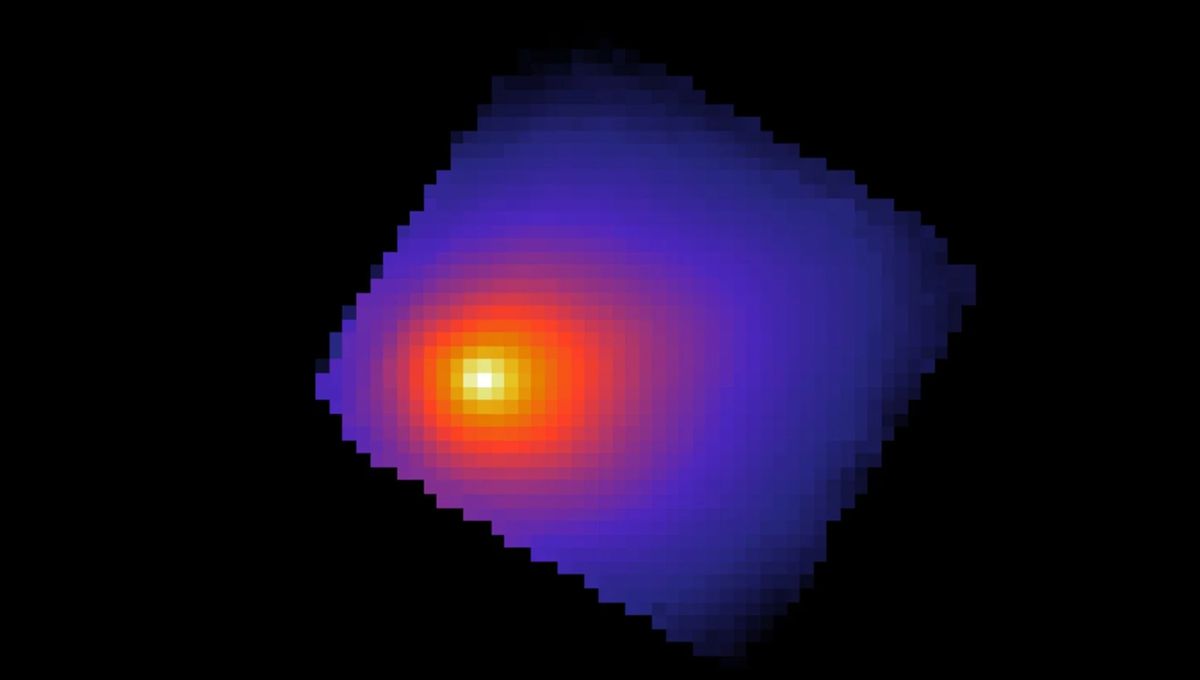
Comet 3I/ATLAS is not beating the allegations that it is a supremely weird object. The fastest interstellar comet yet is also breaking records in other aspects, in particular in its outgassing of carbon dioxide, higher than all but one comet observed by humanity.
Astronomers have used JWST to conduct a very brief observation of this comet. Thanks to the exceptional infrared eye of the space observatory, the data allowed researchers to work out the composition of the coma, the nebulous atmosphere of a comet that forms as its ice turns from solid to gas, getting closer to the Sun.
Asked about the most exciting aspect of the research, lead author Dr Martin Cordiner did not hesitate: “We observed an interstellar space rock with JWST! The data are spectacular, and considering the short (10-minute) observing time, the amount of information we got is astounding.”
The team observed the comet when it was still 3.32 times further away from the Sun than Earth is. It confirmed its strange sunward outgassing, and the researchers also found that its coma is dominated by carbon dioxide (CO2), which allowed a more detailed comparison with the comets of the Solar System and the two other known interstellar objects, Oumuamua, discovered in 2017, and Comet 2I/Borisov, discovered in 2019.
“3I/ATLAS is different compared to our usual comets. It is releasing so much CO2, it’s the second most CO2-rich comet ever seen, after the “peculiar” outlier R2/PAnSTARRS. This makes it one of the most unusual comets ever seen,” Dr Cordiner told IFLScience.
“Having said that, it also has a lot of spectral features in common with normal comets – ice, gas, and dust. So from one perspective, considering its alien nature, it’s surprisingly similar to our own comets, yet it has this surprisingly high CO2 abundance, which means it must be fundamentally different in some way.”
The team believes that the difference is in the composition of the nucleus of the comet. It is enriched with carbon dioxide. How that happened is not exactly clear yet, but there are some intriguing possibilities.
“Regarding the origin of all that CO2, it seems that irradiation of ices in space can convert CO [carbon monoxide] + H2O [water] to CO2, so the question is, when did that happen? Was it during the object’s formation (perhaps in a disk around a star that was producing a lot of UV and X-rays), or did it happen during the object’s subsequent interstellar voyage (for instance, if it passed close to the galactic center, or flew by a supernova)? I don’t have enough information to answer that right now, but with more observations (and theoretical studies), hopefully we can start to build up a clearer picture,” Dr Cordiner told IFLScience.
Comet 3I/ATLAS will get as close as 210 million kilometers (130 million miles) from the Sun, far beyond the orbit of Earth, on October 30, 2025. The interstellar interloper will be visible from Earth until September, then it will be behind the Sun from our point of view. It should then be visible again in December to finish the year.
The study has been submitted to The Astrophysical Journal Letters, and it is available on the ArXiv.
Source Link: JWST Observes Interstellar Comet 3I/ATLAS: “One Of The Most Unusual Comets Ever Seen”